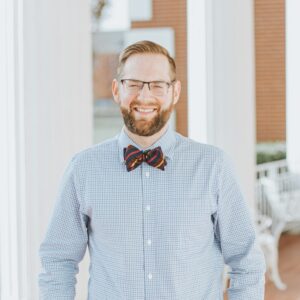
Creaturely Pedagogy Part Four: Ritual
On a Sunday morning in mid-April, my students and I gathered around the firepit in the open-air Council House at the Great Smoky Mountains Institute at Tremont. Light drizzle pattered on the roof and danced through the open smoke vent, speckling the dust and ash at our feet. Just out of sight the Middle Prong river thundered, singing to us through a grove of Hemlocks (Tsuga canadensis), Sycamores (Platanus occidentalis), and Tulip Poplars (Liriodendron tulipifera). The deciduous trees were leafing out, sprouting and unfurling fresh, vibrant spring greens. They would’ve been blinding in the sun, but the clouds softened and dispersed the light so it felt as though the whole world had been dyed green. Soon pale yellow and orange tuliptree flowers would explode from buds to beckon hummingbirds and bumblebees into the bustle of spring.
“The body of Christ, broken for you,” I addressed each student. “And the blood of Christ, the cup of salvation, given for you.” We ate and drank, tasting and seeing, overwhelmed by the goodness of creation and her Creator. Our shared experiences throughout the semester and during that retreat weekend transfigured the embodied, communal practice of eucharistic thanksgiving. We’d seen many broken bodies together – I remembered the sun-bleached skull of a buck, its flesh long returned to the soil. And there’d been at least some blood shed, mostly my own, given to thorns and briars in our adventures and exploration.
While that Sunday service was especially powerful, the “normal” religious rituals of prayer and Scripture reading that began each class session took on new resonances as we learned outside. I probably should not be as surprised at these developments as I sometimes still am. The Bible is “an outdoor book . . . a hypaethral book . . . a book open to the sky. It is best read and understood outdoors, and the farther outdoors the better,” according to Wendell Berry.[i] While Berry denies that he is “an accredited interpreter of Scripture,” I have been learning and practicing the tools of disciplined, responsible, faithful biblical exegesis now for two decades.[ii] The work of considering the words of Scripture outside has had a greater transformative effect on me, I have to admit, than the whole sum of my academic research and theological reflection.[iii] My eyes have been opened anew to the power and beauty of the creaturely imagery of Sacred Scripture. Study and even religious reading inside now often feel sterile, and sterilizing, to me. One student commented that while she’d never before considered reading the Bible from the imagined perspective of a plant or animal, now she could never imagine going back to the way things were before.
Last year, on Earth Day, my Creaturely Theology class invited fellow students and colleagues to join us in a new tradition. We chose not the conventional activity of planting trees – though our future work will certainly involve much planting – but instead to uproot. There are times for both (Eccl 3.2), whether in farming, or faith, or academic formation. In the outdoor classroom of Johnson University’s campus, non-indigenous privets (Ligustrum sinense), honeysuckles (Lonicera japonica and L. maackii), pears (Pryus calleryana), and tree-of-heaven (Alianthus altissimua) are abundant, especially on borders between fields and forest. They obscure the vision of the goodness of this place and crowd out the native lives that once thrived more freely here. Ivy (Hedera hylix), kudzu (Pueraria montana), and wintercreeper (Euonymus fortunei) smother large patches of soil, devouring all available nutrients and making it impossible for indigenous plants, fungi, and animals to dwell where they once did.
One must first have eyes to see to identify such obstacles, and then one can work to uproot them, making possible renewed thriving and good growth. Practicing seeing and reading, giving and receiving, outside, even especially in the traditional practices and words of our faith, has caused scales to fall from our eyes. It has transformed and is transforming us to see, believe, and be empowered to get to work in trust that the God who has begun such work in us, and in God’s world, will be faithful to bring it to completion.
Notes & Bibliography
[i] Wendell Berry, “Christianity and the Survival of Creation,” Cross Currents 43, no. 2 (1993), 155.
[ii] See Wendell Berry, Our Only World: Ten Essays (Counterpoint, 2015), 168.
[iii] This is not to repudiate or downplay any of that work, which I still stand behind. See Joseph K. Gordon, Divine Scripture in Human Understanding: A Systematic Theology of the Christian Bible (University of Notre Dame Press, 2019) and also Joseph K. Gordon, ed., Critical Realism and the Christian Scriptures: Foundations and Readings (Marquette University Press, 2023).
Leave a Reply